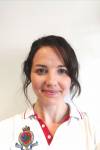When is breast cancer awareness month?

Every year, October marks Breast Cancer Awareness Month in countries across the world. It serves as a time to raise awareness about the condition and the importance of early detection and treatment. At Central Health Physiotherapy we wanted to contribute to this so please keep reading to improve your awareness, learn how to check yourself and what you can do to reduce your risk of developing the condition.
What is breast cancer?
Breast cancer is a condition in which cells within the breast tissue multiply in an uncontrolled manner to form a tumour. It is the most common form of cancer in the UK. There are many different types of breast cancer depending on which of the tissues within the breast are affected.
Who gets breast cancer?
Ninety-nine percent of newly diagnosed cases of breast cancer are in women (55,000 cases per year). It is estimated that one in seven women will develop breast cancer at some time in their lives. Eighty percent of new cases are diagnosed in women aged fifty-years and older. Only four percent of newly diagnosed cases are in women younger than forty-years.
Though primarily a female condition, breast cancer does also affect men. Less than 1% of new cases of breast cancer are diagnosed in men, the majority of whom are sixty-years and older.
What are the breast cancer survival rates for UK?
Breast cancer survival rates continue to improve. This has been attributed to increased awareness, earlier detection due to improved screening methods and ongoing improvements in treatment.
- 87% per cent of women survive breast cancer for five years or more
- 78% per cent of women survive breast cancer for 10 years or more
- 65% per cent of women survive breast cancer for 20 years or more
What causes breast cancer?
The causes of breast cancer are complex and as yet, not fully understood. There are a number of factors which may put an individual at an increased risk however. Unfortunately, not all factors can be controlled; being female and getting older, for example are the biggest risk factors for developing breast cancer.
Other factors, which we can control include; obesity, excess alcohol consumption and being in-active.
Obesity has been identified as the primary cause in 8% of breast cancer cases in the UK. Being overweight is associated with a higher oestrogen production which may explain the link between obesity and breast cancer. There is also a small increased risk of developing breast cancer in women who are in-active. Current guidelines recommend that adults aged 19-64 get 150 minutes of moderate exercise or 75-minutes of vigorous exercise per week.
Studies have shown that women who consume in excess of two units of alcohol per day have a 9% increased risk of developing cancer. The risk increases to 13-23% in those who consume two to six units per day, and to 60% in those who consume in excess of 6 units per day compared to those who do not consume alcohol. Excess alcohol consumption has been identified as the primary cause in 8% of breast cancer cases in the UK.
There is a small increased risk of developing breast cancer in those who use HRT or oral contraceptives. Less than 1% of breast cancer cases are caused by oral contraceptives and 2% by HRT. This increased risk declines on cessation of these therapies such that ten years after oral contraceptives use and five years after HRT use there is no increased risk of developing breast cancer.
What are the signs and symptoms of breast cancer
It’s helpful to know, breast cancer can present differently in different people. It is therefore important that you check your breasts regularly, so you know what is normal for you and if something changes. Common symptoms to look out for include;
- A lump or swelling in the breast, chest or armpit, you may only be able to feel the lump but not see it
- Puckering or dimpling of the skin
- A change in the colour of the breast, it may look red, bruised or inflamed
- Thickening of the skin on the breast that looks or feels like orange peel
- A change to the appearance of the nipple, it may tun in or be pulled up, down or to the side
- A rash or crusting at the nipple or dry flaky skin at the nipple
- An unusual discharge from the nipple
- Any change in the size or shape of the breast
BE AWARE: Noticing any of these symptoms does not necessarily mean you have breast cancer however it is important to have anything unusual checked by your GP.
How to check your breasts regularly
You can help yourself by taking the time to check your breasts once a month to help you get to know what is normal for you and to identify anything unusual more quickly. There is no right or wrong way to do this however you may find the following tips helpful. We’ve also included a link to a video to help you too.
- Firstly, feel each breast to the collar bone and into the armpit
- Secondly, look at your breasts and the area up to the armpit in the mirror with your hands at your sides
- Then look at your breasts and the area up and into the armpit in the mirror with your hands over your head
- Finally, look and feel for any changes such as those listed above
- Report anything unusual or different to your GP without delay
When can I get screening for breast cancer?
The NHS Breast Screening Programme is available to all women, aged between 50 and 71 years who are registered with a GP in the UK. This programme seeks to detect breast cancer at an early stage when treatment can offer the best outcomes. Women who attend are given a mammogram (a type of x-ray of the breast) which can detect cancer cells when they are too small to see or feel. In fact, a mammogram can detect cancer up to four years before a woman would notice a sign herself.
Unfortunately, there has been a decline in recent years in the number of women engaging in the NHS breast screening programme.
Is there anything I can do to reduce my risk of developing breast cancer?
We cannot control all of the risk factors associated with developing breast cancer such as aging and gender. There are measures we can all take not just during breast cancer awareness month, but every month to reduce the chances of developing breast cancer. These include:
- Eating a well-balanced diet rich in vegetables, fruit and whole grains
- Taking regular exercise
- Maintaining a healthy weight
- Limiting alcohol consumption
- Avoiding smoking
- Attend routine screening appointments
Keep yourself safe with TLC
Remember the acronym TLC
- Touch your breasts, does anything feel unusual?
- Look at your breasts, does anything look different?
- Check with your GP if you notice anything unusual.
Every month should be breast cancer awareness month!
October serves as the annual reminder month for breast cancer awareness. However, every month should be breast cancer awareness month! It’s a good habit to bet into the routine of cheking your breasts regularly. Whatever your gender regular checking of your breasts should be second nature.





Comments